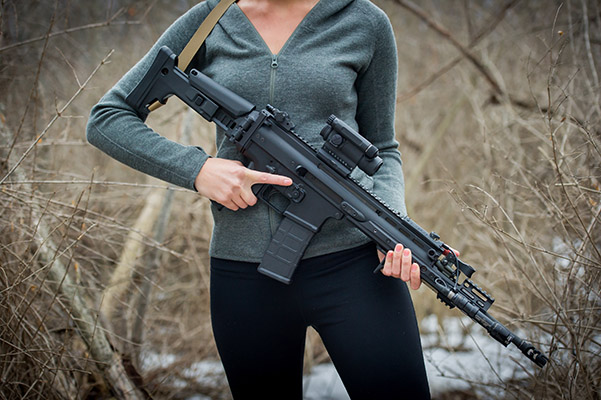
The use of laminated wood for gun stocks goes back to around World War II, when the Germans installed them on the Mauser 98. But as long as there are enthusiasts who want the warmth and good looks that hardwood provides, these stocks are unlikely to disappear completely. His timing was off (they should all be gone by now), but he was right in that wood prices have continued to increase and more long guns now leave the factory outfitted with polymer.

In the mid 1990s, I remember a fellow sporting-goods store employee lamenting the disappearance of hardwood stocks due to ever shrinking old-growth forest products to draw from. It’s relatively easy to ding and scratch hardwoods, taking away from their inherent beauty, and despite the best efforts of craftsmen to pick suitable sticks to work with, wood stocks can still crack or fracture-even with moderate use. Like other nature-made products, wood is susceptible to changes in humidity and water damage. Properly cared for, natural wood stocks will last multiple lifetimes, but they do have their weaknesses. The more beautiful the piece of wood, the more expensive it’s going to be. Thus the reliability of the wood is a starting point for pricing since a piece of wood does not have to be pretty to do the job. A piece of wood is rejected for use as a stock if it has weaknesses or flaws that will cause it to fracture from the stresses induced by gunfire.

There's a whole nomenclature dedicated to describing wood stocks that includes vocabulary such as grain, figure and grade. Although walnut is a staple of the stock business, other durable woods including birch (often stained to look like walnut), maple and mesquite are used as well. Instead, this is a high-level introduction to the most common stock-material categories you’re likely to see displayed on your local dealers’ shelves.įor some rifle enthusiasts, there will never be a stock material that is a suitable replacement for a properly crafted piece of hardwood, lovingly shaped to support the rifle's action, caress the shooter's hands and please the owner's eyes. Delving deeply into stock options would require an encyclopedic level of historical and scientific information, so this article is by no means all inclusive. If you've recently arrived on the shooting-sports scene, then a better understanding of the perks and limitations of various stock materials can be helpful when deciding which rifle to buy. Today you'll find rifles outfitted with shock-resistant polymers, multi-layered composites and milled-metallic chassis systems standing right alongside the natural hardwood models. But just as every other facet of the shooting sports has been affected by technological advances, rifle stocks too have continued to change and evolve with the introduction of new materials and manufacturing processes.

Prior to World War II, a rifle shipped with a wooden stock. Back when our grandparents went shopping for firearms, they were greeted by rifle racks filled with fine blued steels and handcrafted hardwood stocks.


 0 kommentar(er)
0 kommentar(er)
